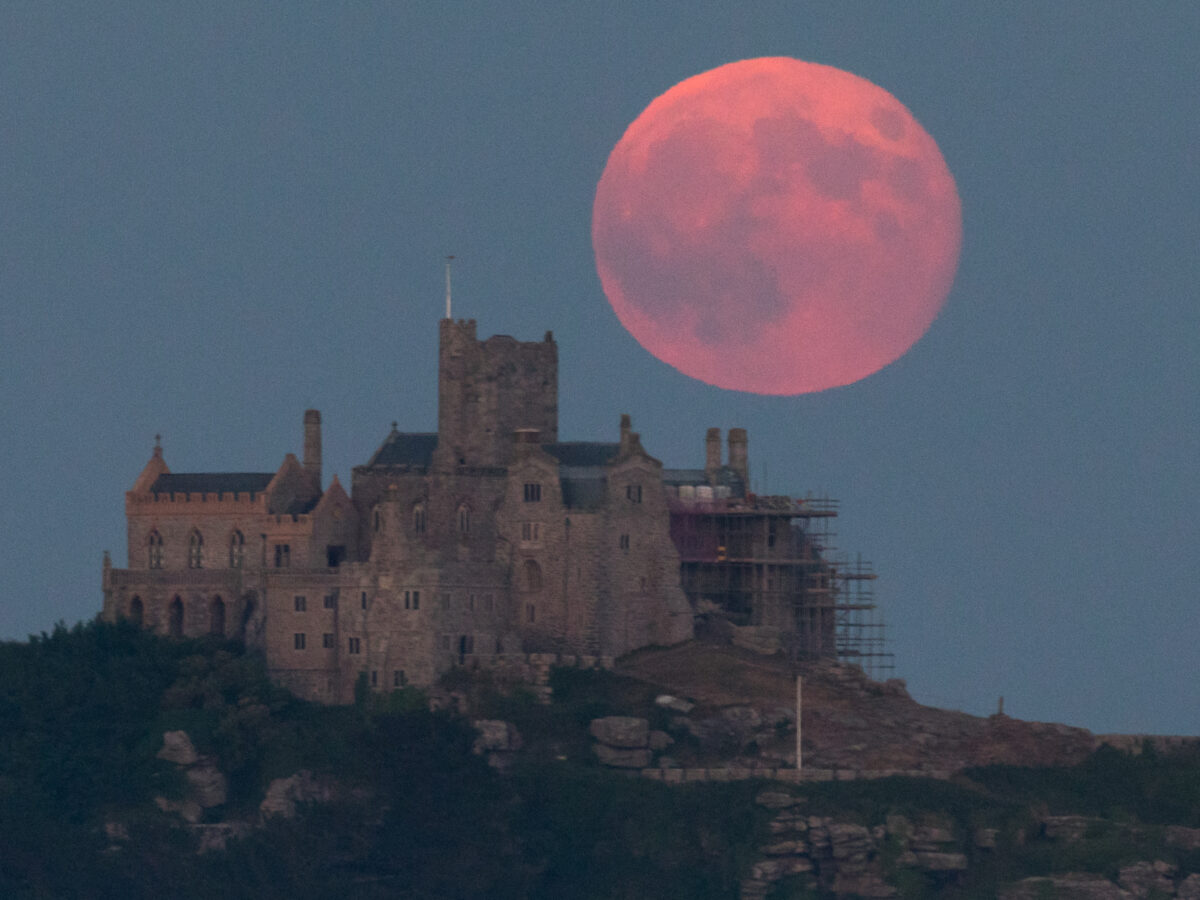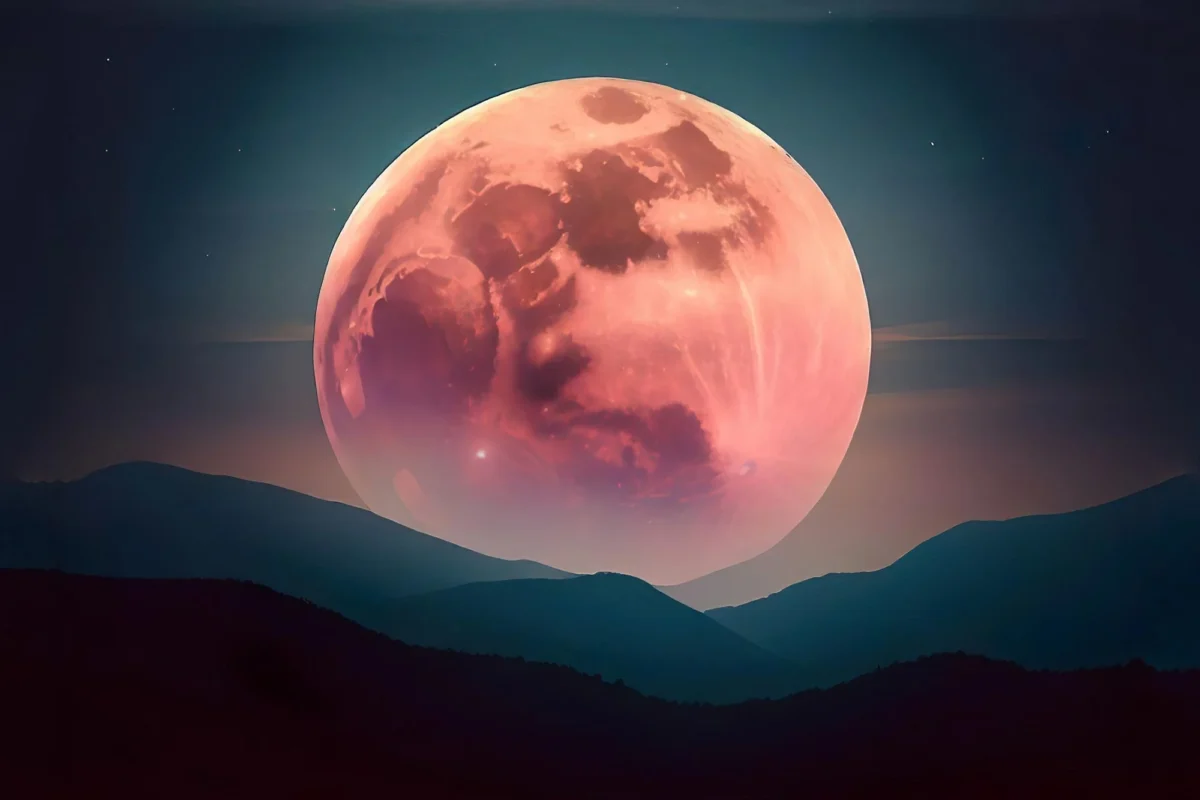As summer takes hold in the Northern Hemisphere, the night sky offers a celestial delight known as the Strawberry Moon. This enchanting name evokes images of ripe, juicy strawberries, capturing the imagination and curiosity of skywatchers worldwide. But what exactly is the Strawberry Moon, and why is it called that? Let’s delve into the origins, cultural significance, and scientific aspects of this June full moon.
Table of Contents
Origins of the Name
The term “Strawberry Moon” is rooted in the traditions of Native American tribes, particularly those in the northeastern United States. The Algonquin tribes, among others, named each full moon to mark the changing seasons and important natural events. June’s full moon signalled the time to gather ripening wild strawberries, a sweet and nourishing treat after a long winter and spring.
Early European settlers adopted and popularised this name, who integrated Native American lunar naming traditions with their own. Over time, the Strawberry Moon became a fixture in the cultural lexicon, symbolizing the early summer harvest and the beginning of warmer weather.
Cultural Significance
The Strawberry Moon holds various meanings across different cultures. In Europe, it was sometimes referred to as the Rose Moon or the Hot Moon, highlighting the blooming of roses and the onset of summer heat, respectively. In China, it is known as the Lotus Moon, associated with the blooming of lotus flowers, which are significant in Chinese culture for their beauty and spiritual symbolism.
In contemporary society, the Strawberry Moon often serves as a reminder to reconnect with nature and appreciate the seasonal changes. It inspires gatherings and celebrations, where people can come together to enjoy the warm weather and the natural beauty of the full moon. This tradition of naming full moons creates a sense of continuity and connection to the rhythms of the Earth, fostering a deeper appreciation for the natural world.
Astronomical Aspects
From an astronomical perspective, the Strawberry Moon is not unique in its physical characteristics compared to other full moons. A full moon occurs when the Moon is on the opposite side of the Earth from the Sun, allowing the entire face of the Moon to be illuminated. What makes the Strawberry Moon special is its timing and the cultural stories that surround it.
June’s full moon is often the lowest in the sky compared to other full moons throughout the year. This is due to the tilt of the Earth’s axis and the Moon’s orbit, which causes the full moon to appear lower in the sky as it follows a path closer to the horizon. This lower position can make the moon appear larger and more golden due to the scattering of light in the atmosphere, enhancing its beauty and making it a particularly striking sight.
Scientific Importance
In addition to its cultural significance, the Strawberry Moon also provides opportunities for scientific observation and public engagement with astronomy. Organizations like NASA and various astronomical societies often use events like the Strawberry Moon to promote interest in space and science. Public viewings, lectures, and educational programs are frequently organized to coincide with notable lunar events, encouraging people to look up and learn more about our closest celestial neighbour.
Modern Celebrations

Today, the Strawberry Moon continues to inspire celebrations around the world. Many people mark the occasion with outdoor activities, such as moonlit hikes, picnics, and stargazing events. Social media buzzes with photos and stories as people share their experiences and observations of the Strawberry Moon. In some places, festivals are held to honour the cultural and historical significance of this full moon, blending ancient traditions with modern festivities.
For gardeners and farmers, the Strawberry Moon is a practical marker of the growing season. It signals the time to harvest certain crops and prepare for the next phase of planting. This lunar connection to agriculture highlights the enduring relationship between human activities and the natural world.
A Moment of Celestial Connection
The Strawberry Moon is more than just a celestial event; it is a symbol of the changing seasons, cultural heritage, and the enduring beauty of nature. Its name, steeped in the traditions of Native American tribes, reminds us of the importance of observing and celebrating the natural cycles of the Earth. As the Strawberry Moon rises, it invites us to pause, look up, and reflect on the wonders of the night sky and the rich tapestry of stories that it inspires.
Whether you are a seasoned astronomer, a casual sky watcher, or someone simply enjoying a warm summer night, the Strawberry Moon offers a moment of connection to the ancient rhythms that guide our world. So, the next time you see the June full moon, remember the strawberries, the stories, and the shared human experience that it represents.



